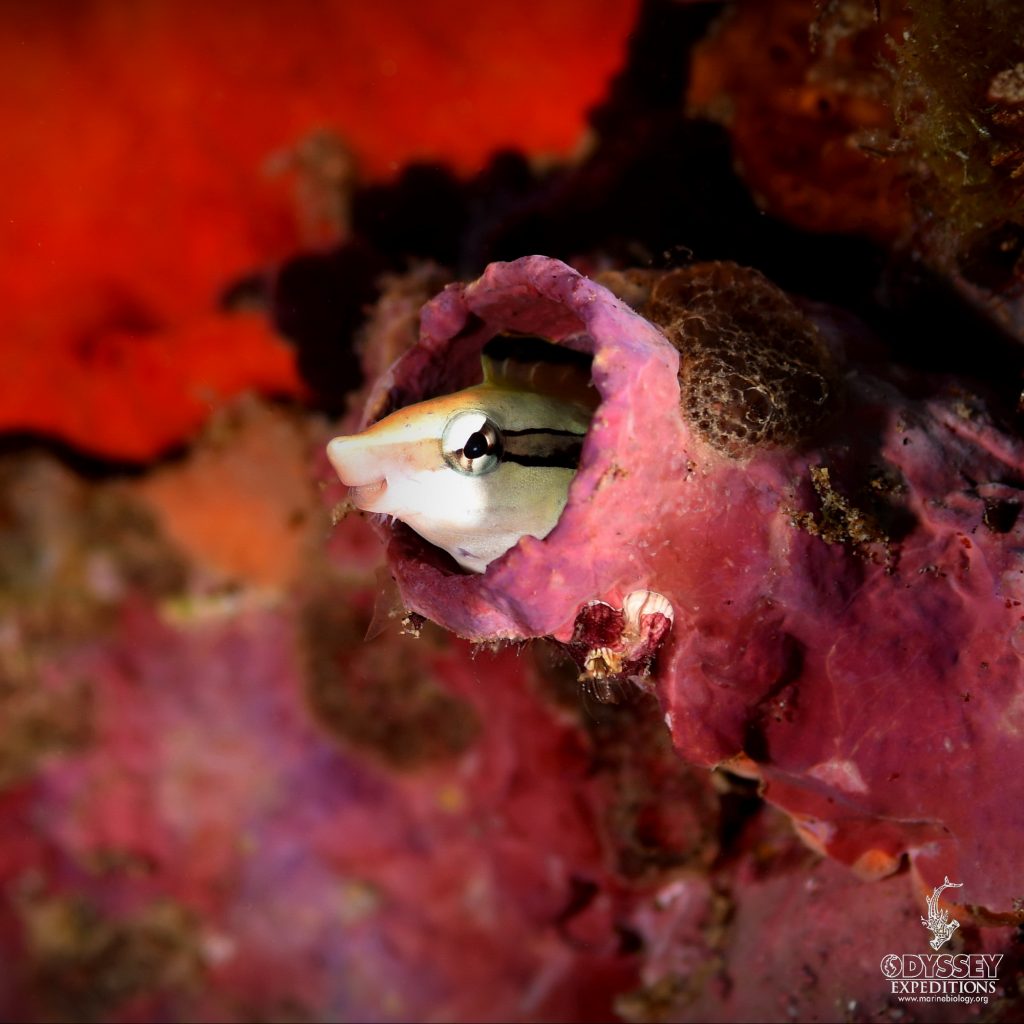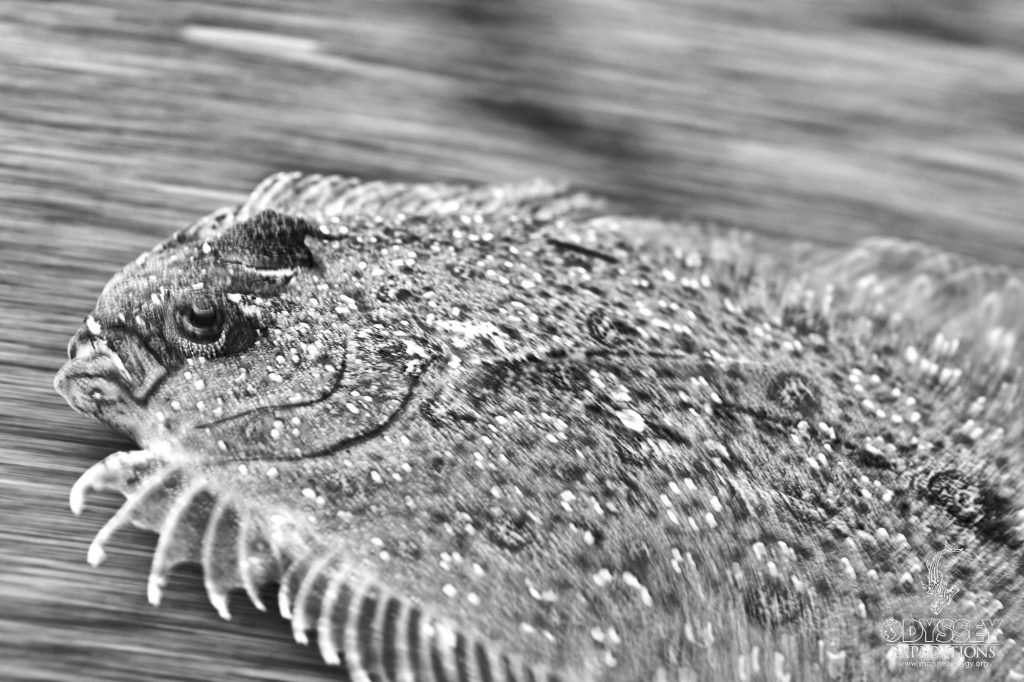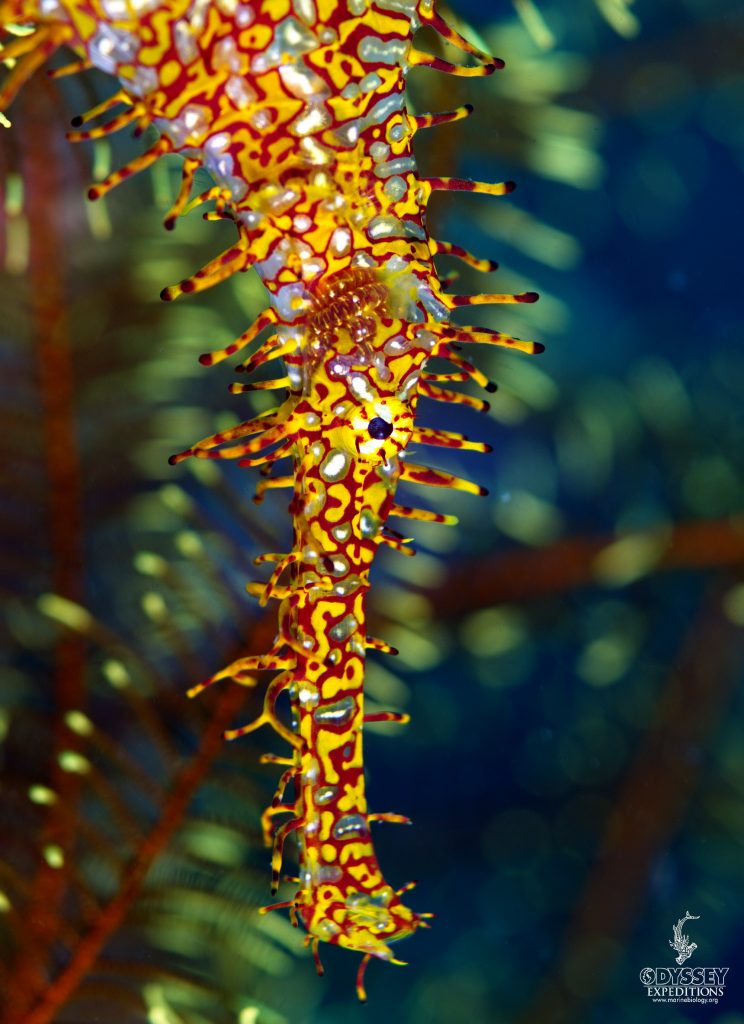
Painted Frogfish – Antennarius pictus – Has a lure which is about twice as long as the second dorsal spine. Nearly always 3 light-edged spots on tail fin. A. pictus shows a lot of different colors and changes them quite often.
I was disappointed that I could not capture a photo of the little lure waving about. When I put my camera in the housing I did not get the strobe hot shoe clicked completely in place. This was lighted by holding my dive light from above and I couldn’t produce enough light for a fast enough shutter speed to catch the waving.
Etymology
Antennarius: From Latin, antenna, antemna = ‘sensory organ’
pictus: From Latin = ‘painted’





